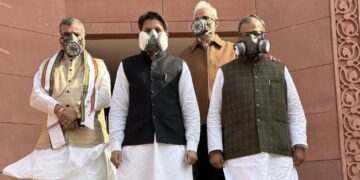Pune: As temperatures soar in Pune, the city’s newly merged villages are facing an escalating water crisis, with a sharp rise in dependence on water tankers. The growing demand highlights the mounting pressure on the Pune Municipal Corporation (PMC) to address water supply issues in these rapidly urbanizing areas.
Recent data released by PMC reveals a dramatic increase in tanker trips over the past four years. Between January and March, the number of trips jumped from 81,361 in 2021–22 to 126,110 in 2024–25 — a nearly 55% rise.
Of the 34 villages integrated into PMC’s jurisdiction since 2017, most are now showing the highest dependence on water tankers. Initially projected to house 11.14 lakh people, the population in these areas is now expected to reach 18.11 lakh by next year. This rapid growth is placing an enormous burden on Pune’s existing water infrastructure.
While PMC claims to have installed water pipelines in 11 of these villages — such as Dhayari, Nanded, Mundhwa, Manjari, and Keshav Nagar — residents say the supply is still inconsistent. Delays in completing water network projects mean many households continue to rely on tanker services.
“Infrastructure development has started, but most of these areas still lack a consistent water supply,” explained Prasanna Joshi, superintendent engineer of PMC’s water supply department.
The increasing demand has also led to a spike in water tanker costs. Tankers that previously cost ₹800 are now priced between ₹1,800 and ₹2,500, depending on the urgency and water source.
A resident of Vasant Vihar Society in Keshav Nagar, Dilip Shelke, shared that their society needs approximately 75 tankers every month. “Out of those, only 15 are provided by PMC. The rest are private, and the cost is becoming unmanageable,” he said.
While PMC supplies 10,000 litres of water per tanker for ₹666, private operators are charging nearly triple that amount. Rising fuel prices and operational expenses have been cited as reasons for the inflated costs.
Further complicating the issue is the alarming rate of water loss due to leakages, which currently stands at around 35%. Although PMC has identified 141 zones where leaks occur, only 50 have undergone detection and repairs so far.
Even though some central areas like Baner, Balewadi, and Pashan have seen improvements in water management, the situation in newly merged zones remains critical. Officials say tanker demand in these villages has surged by 40% compared to the previous year.
As the summer heat intensifies, Pune’s water supply system continues to face immense strain — one that requires immediate attention and long-term infrastructure solutions to ensure equitable access for all residents.

















